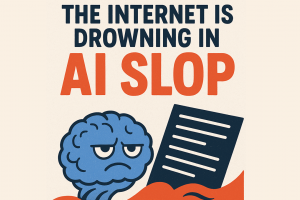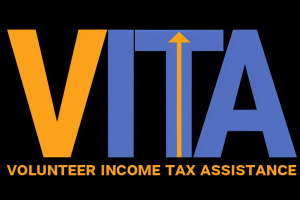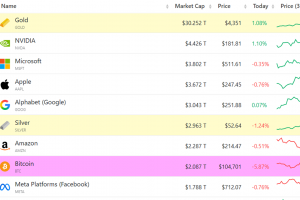What if your body could heal itself, clean out toxic waste, and reset your metabolism — simply by pausing eating? Grounded in “The Complete Guide to Fasting” by Jason Fung, this post breaks down the science, real-life benefits, and easy steps to incorporate safe, effective fasting. Whether you’re a busy professional or health seeker, get inspired to try a smarter, gentler path to detox, energy, and freedom. Share this with someone who’s ready to break free from diet rules.
What if everything you thought you knew about “eating more to be healthy” was missing a powerful chapter — one where not eating gives your body its greatest chance to clean house, repair itself, and renew?
Pause for a moment and imagine your cells buzzing with repair, your brain clear, your skin radiant — all sparked by doing something as simple as waiting to eat. That’s not mystical — it’s deeply biological.
In today’s post, I’ll guide you — step by step — through a scientific, compassionate, safe approach to fasting, grounded in The Complete Guide to Fasting by Jason Fung (2016). We’re going beyond fad diets, beyond extremes, into a rediscovery of how your body is wired to heal.
Your mission (should you choose to accept it): read with curiosity, test with care, and share with someone who’s ready to flip their health script.
Understanding the Science of Fasting for Detox and Healing
Fung explains that fasting activates biological processes that “cleanse” and repair the body:
-
Autophagy (Cellular Self-Cleansing): After 24-72 hours of fasting, the body breaks down and recycles damaged cellular components, such as misfolded proteins or debris, effectively detoxifying by clearing cellular waste. This process, which reduces inflammation and may lower cancer risk or protect against Alzheimer’s, is suppressed by constant eating, especially high-protein or high-carb diets.
-
Hormonal Balance: Fasting lowers insulin levels (by up to 50% compared to standard diets), boosts growth hormone (up to 5-fold in 2 days), and increases norepinephrine (by 117%), promoting fat-burning (ketosis). This releases toxins stored in fat and heals conditions like type 2 diabetes, obesity, and chronic inflammation. Studies cited in the book show metabolism increases by 12% after 4 days of fasting, debunking myths about metabolic slowdown.
-
Holistic Healing: Fasting enhances insulin sensitivity, reduces visceral fat, and promotes longevity by lowering oxidative stress. Real-world examples from the book include patients reversing diabetes in weeks or losing 46 pounds without muscle loss. Detox benefits include reduced inflammation (lower hsCRP), improved immunity, and cellular regeneration.
Note: Extended fasting (3-7 days or more) maximizes autophagy and hormonal benefits but requires gradual adaptation.
Preparing for Fasting
-
Health Assessment: Consult a doctor, especially if on medications (e.g., insulin, which may need dose adjustments to prevent hypoglycemia). Avoid fasting if under 18, pregnant, breastfeeding, or have a history of eating disorders.
-
Gradual Adaptation: Transition to a low-carb diet (minimizing sugar and refined starches) to ease into ketosis. Reduce caffeine gradually to avoid headaches. Choose a low-stress period, avoiding travel or social events.
-
Monitoring Tools: Prepare a blood glucose meter, ketone strips (target: 1.0-3 mM ketones), scale, and journal to track hunger and energy. Ensure hydration (2L water/day) and stock Himalayan salt for electrolyte balance.
1. Why fasting? The biology behind “eating less to heal more”
1.1 The mismatch of modern eating
-
In our evolutionary past, food was sporadic. Periods of eating alternated with periods of fasting.
-
Modern life brings constant access to food: snacks, apps, vending machines, always-on schedules.
-
This means our bodies rarely enter “fasting mode” — the mode where deep repair happens.
-
Excess insulin, chronic low-grade inflammation, insulin resistance — these are downstream effects of constant grazing.
1.2 Insulin, glucagon, and metabolic switches
-
Insulin — our “storage” hormone — rises after meals, signaling cells to store surplus energy (fat, glycogen).
-
Between meals, insulin falls, glucagon rises, prompting the body to mobilize stored energy (fat burning, glycogen breakdown).
-
If you never give insulin a break, you never allow your body to shift into repair and cleanup.
-
Jason Fung emphasizes that the key to metabolic health is insulin fasting — not just calorie restriction.
1.3 Autophagy, cellular cleanup, and longevity
-
Autophagy = “self-eating” — a mechanism where damaged proteins, organelles, and toxins are recycled.
-
Fasting is one of the strongest triggers of autophagy. Cells literally clean house.
-
Animal models show that intermittent fasting or extended fasts improve lifespan, reduce cancer risk, protect neurons, enhance heart health.
-
In humans, markers of inflammation, oxidative stress, and insulin resistance improve with periodic fasting.
1.4 Ketones, mitochondria, and brain energy
-
After 12–24 hours of fasting, your liver begins producing ketones (β-hydroxybutyrate, acetoacetate).
-
Ketones serve as clean-burning fuel for your brain, heart, and muscles.
-
Ketosis supports mitochondrial biogenesis, less oxidative stress, and even neuroprotection.
-
Many fasting enthusiasts report mental clarity, mood elevation, and easier focus — all backed by emerging research.
1.5 Hormonal balance, gut rest, and immune modulation
-
Fasting gives your digestive system a break. Lower calorie load, less immune activation from gut microbes, less metabolic stress.
-
Hormones like human growth hormone (HGH) and adiponectin improve. Fat-storing hormones (insulin) decline.
-
Some studies show improvements in inflammatory markers (CRP, IL-6), and even immune cell “recycling.”
2. Fasting protocols: how, when, and how long
Jason Fung provides a practical framework — not extremes. Here are the main protocols:
| Protocol | Fast Window | Frequency / Use Case | Notes & cautions |
|---|---|---|---|
| 16/8 (time-restricted eating) | 16 hours fast / 8 hours eating | Daily or most days | Easiest to adopt; good for maintenance |
| 18/6 or 20/4 | 18 or 20 hours fast / 6 or 4 hours eating | Several days a week | For stronger impact; requires adaptation |
| 24-hour fast (Dinner to Dinner) | 24 hours | 1–2× per week | Good “reset” day |
| 36-hour fast (e.g. from 6 pm → next morning) | 36 hours | Use sparingly | More potent effects, but more difficulty |
| Multi-day fasts (48–72 hours) | 2–3 days | Occasional, under supervision | Deep autophagy, immune reset — not for everyone |
2.1 How to choose your starting protocol
-
Start gently: if you’re new, try 12 → 14 → 16 hours.
-
Once comfortable, experiment upward.
-
Use your schedule: e.g. skip breakfast or dinner to create a natural window.
-
Stay well hydrated (see later).
-
Monitor how you feel: energy, hunger, mood.
2.2 What to drink / what to avoid during fast
Allowed (non-caloric or extremely low-cal):
-
Water (plain, mineral, sparkling)
-
Black coffee (no sugar, no creamer)
-
Unsweetened tea
-
Electrolyte supplements (sodium, potassium, magnesium) without sugar
-
Bone broth (only in more flexible or “modified” fasts)
Avoid:
-
Artificial sweeteners (many spike insulin)
-
Juices, smoothies, milk, sugar-laden drinks
-
Calorie drinks or hidden liquid calories
2.3 Breaking the fast (Refeeding) — how to do it gently
-
Do not binge. Your digestive enzymes need time to ramp up.
-
Start with easily digestible foods: vegetables, soups, bone broth, steamed fish.
-
After 30–60 min, allow protein and healthy fats.
-
Avoid processed carbs, sugar bombs, inflammatory oils.
-
Let your body guide portion size.
2.4 Safety, contraindications & special populations
Avoid or consult a physician if you:
-
Are pregnant or breastfeeding
-
Have type 1 diabetes, adrenal insufficiency, eating disorders
-
Are on medications requiring food timing (e.g. insulin, certain blood pressure meds)
-
Are elderly, frail, severely underweight
During fast watch for: -
Dizziness, fatigue, headache (resolve as adaptation occurs)
-
Electrolyte imbalance (supplement if needed)
-
Over-exercise — prefer gentle movement, not heavy lifting in early fasts
3. How detox and healing really occur — not a marketing scam
3.1 “Detox” isn’t about flushing out pills
-
There’s no magic pill or juice that “detoxes” you. Your liver, kidneys, lymph, and cells do the work daily.
-
Fasting merely supports those systems by reducing metabolic burden, giving resources to repair, and enabling cellular cleanup.
3.2 Evidence of toxin mobilization
-
As fat stores shrink, lipophilic toxins (like PCBs, dioxins) can be released — so slow, gradual weight loss is safer.
-
Autophagy helps degrade damaged proteins, misfolded molecules, and defective mitochondria.
-
Fasting lowers oxidative stress markers (MDA, 8-OHdG) in human trials.
-
Animal research: intermittent fasting reduced liver fat, inflammatory signals, and markers of toxin accumulation.
3.3 Healing beyond detox: inflammation, cell renewal, immunity
-
Fasting lowers CRP, TNF-alpha, IL-6 in many studies (markers of chronic inflammation).
-
Autophagy helps clear senescent cells (cells that are alive but harmful).
-
Stem-cell regeneration: in longer fasts (48–72h), animal studies show hematopoietic stem cell activation in bone marrow, resetting immune cells.
-
Repair of DNA, telomere maintenance: intermittent fasting has been associated with improved DNA repair pathways (sirtuins, FOXO, AMPK).
4. Real-life stories, pitfalls, and mindset shifts
4.1 Real stories
-
Many people report mental clarity, improved concentration, deeper sleep, and emotional calm during fasting phases.
-
Some athletes use “fasted training” to enhance fat adaptation and metabolic flexibility.
-
Patients with type 2 diabetes have reversed glucose markers (e.g. lower HbA1c) under medically supervised fasting + diet changes.
-
In Fung’s clinical practice, patients controlled insulin resistance, lost visceral fat, and reduced hypertension.
4.2 Common obstacles & how to overcome
| Obstacle | Solution / Tip |
|---|---|
| “I’m starving, I can’t handle the hunger” | Hunger comes in waves; distract, hydrate, wait 10–15 min, it often subsides |
| “I’ll lose muscle / be weak” | Moderate protein and resistance training preserve muscle; fasting alone doesn’t cause large muscle loss in the short term |
| “I’ll binge once it’s over” | Plan your refeed, eat slowly, remain mindful; the longer you fast, the better your satiety signals |
| “I feel dizzy, lightheaded” | Check electrolytes (Na, K, Mg), ensure hydration |
| “I can’t socialize / eat with my family” | Time your window around social meals; occasionally fast on non-social days |
| “I tried once, I failed” | Don’t quit — adjust window, go slower, consider pairing with community support |
4.3 Mindset shifts
-
Fasting is not denial — it's permission for healing.
-
View hunger as a signal, not a command.
-
Embrace “less is more” — the body is elegantly efficient.
-
Celebrate small wins: 14 → 16-hour fast, feeling energetic after a fast, better labs.
-
Use tracking tools (journals, apps) to monitor trends, not momentary urges.
5. Step-by-step 30-day beginner’s plan
Here’s a sample progression you can try. (Always consult your doctor.)
Week 1 – Adaptation
-
Days 1–3: 12/12 (fast 12 h, eat in 12 h)
-
Days 4–7: 14/10
Week 2 – Strengthening
-
Days 8–11: 16/8
-
Days 12–14: 16/8 or 18/6 (if comfortable)
Week 3 – Reset
-
Day 15: 24-hour fast (Example: dinner to dinner)
-
Days 16–18: 16/8
-
Days 19–20: 18/6
Week 4 – Exploration & choice
-
Day 21: 24-hour fast
-
Days 22–24: 16/8
-
Day 25–26: 36-hour fast (if confident)
-
Days 27–30: mix of 16/8 and 18/6
Track:
-
How many hours fasted
-
Energy, mood, sleep quality
-
Lab values (if available: fasting insulin, glucose, CRP)
-
Side effects and adjustments
At the end of 30 days, reflect: What worked? What didn’t? Continue the pattern you enjoy.
6. How to amplify results with lifestyle and nutrition
6.1 Nutrition quality in eating windows
-
Focus on anti-inflammatory whole foods: vegetables, berries, legumes, wild-caught fish, pastured eggs, nuts, seeds.
-
Avoid processed sugar, refined grains, seed oils high in omega-6.
-
Moderate protein (not excessive) to preserve muscle without overloading pathways.
-
Healthy fats: olive oil, avocado, coconut, nuts.
-
Fiber-rich foods to feed gut microbiome.
6.2 Sleep, stress, movement
-
Adequate sleep (7–9 h) enhances repair.
-
Stress management (meditation, breathing, nature) reduces cortisol which antagonizes fasting benefits.
-
Gentle movement or resistance training — walking, yoga, light lifts. Avoid ultra-high intensity on long fasts early on.
6.3 Supplements and support
-
Electrolytes: sodium (½–1 tsp salt in water), potassium, magnesium.
-
Omega-3 (EPA/DHA) support inflammation balance.
-
Vitamin D, quality multivitamin (check with your provider).
-
Supportive community or coaching to maintain consistency.
7. Viral appeal: encourage sharing, conversation & challenge
Call to action ideas:
-
“Tag someone who always says ‘I can’t skip breakfast’ — and let them try 16 hours with you this week.”
-
“Comment your first fasting length (in hours) — let’s cheer each other on.”
-
“If you’ve ever tried a 24-hour fast, share your experience — how did you feel afterward?”
-
“Post a ‘before fasting’ selfie and a ‘fasted, radiant’ selfie — let’s see the glow-up.”
-
“Challenge: try 16/8 for one week and share this post with someone who might join you.”
Everyone loves a “before/after,” a small test, a shared experiment. Use visuals — your journal, your feelings, your data.
Encourage people: “I’ll repost or comment on your story” — social reciprocity strengthens spread.
8. Closing & reassurance
You don’t need to fast like an ascetic monk to benefit. You don’t need extreme deprivation. This is not a punishment — it’s a permission to let your body rest, heal, and reset.
Expect some discomfort early. Expect questions. Expect your body to surprise you. With consistency, respect, and self-observation, many people report more energy, clearer skin, lower inflammation, better labs, and renewed vitality.
If you try it, I want to hear from you. Comment below your first fasting window. Share your wins or challenges. Tag a friend who deserves this reset. Let’s travel this path together — not as a fad, but as a rediscovery of what our bodies were built to do: heal, survive, thrive.
Let’s begin — your body is listening.


























